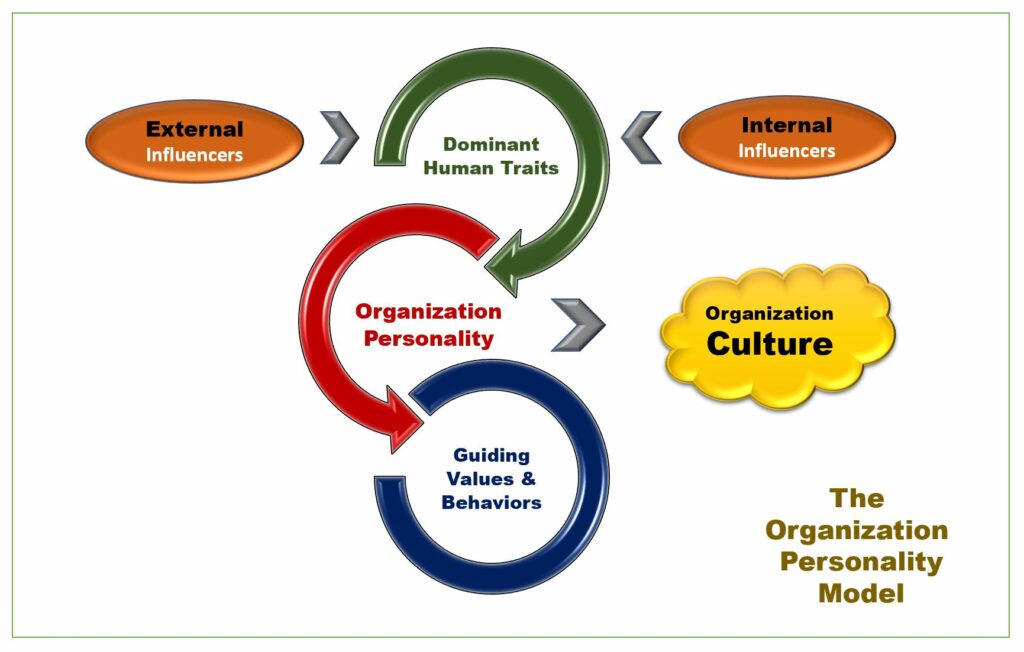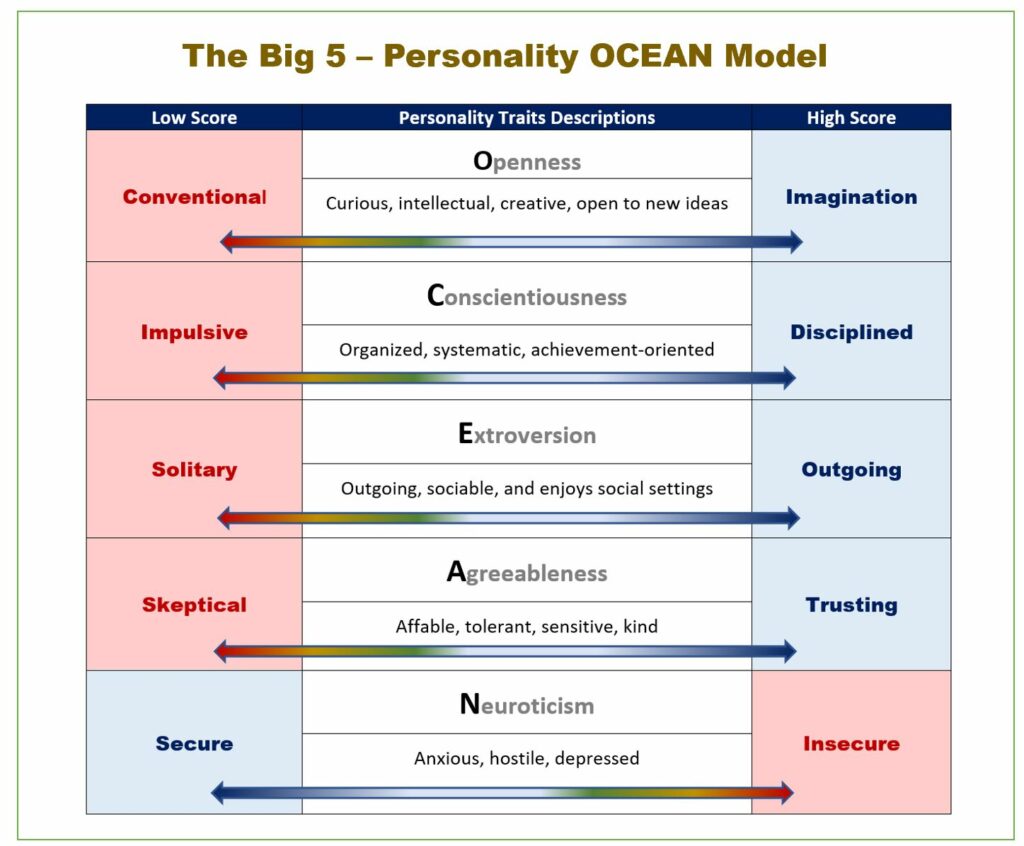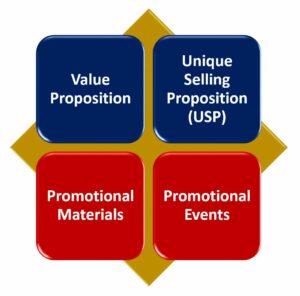Introduction
Organization Personality epitomizes how an institution perceives, interprets, evaluates, and responds to real and potential risks, problems, and opportunities with employees, patrons, and partners. An organization’s personality is the melding of dominant employee traits, cognition, and emotional patterns with external and internal influencers that encourage and empower workplace behavior.
There are many types of organization personalities that run the gauntlet from good, bad, and ugly! Management needs to continually be cognizant of the impact that their dominant traits (positive to negative) have on workplace effectiveness and value creation. An essential capability, in the current high-velocity digital era, is the ability to recognize problematic values and behaviors and change quickly.

A proactive Organization Personality incessantly adjusts and refreshes the values and trait and behavior preferences that support and sustains an institution’s cultural for employees and associated stakeholders. In this context, the organization’s personality is a crucial component and modifier of the enterprise culture.
“Ultimately, it’s on the company leaders to set the tone,” Cook told Fast Company. “Not only the CEO, but the leaders across the company. If you select them so carefully that they then hire the right people, it’s a nice self-fulfilling prophecy.”
Tim Cook
A compelling Organizational Personality helps influence the way consumers view the brand and value their current or possible engagement with the entity. An organizational personality, practical for use with both the business and public sectors as it elicits positive emotional responses from targeted audiences. A formidable workplace personality provides positive values and guiding behaviors resulting in the right decisions supporting new and continual customer and citizen interactions and enhanced brand recognition and loyalty.
Supporting Definitions
Organizational Culture
Organizational culture consists of shared values, traits, and beliefs, which influence how employees behave in internal and external settings. Culture includes unique artifacts and rituals that reinforce the consistency of the organizational narrative.
Personality (Human)
Personality consist of traits, behaviors sets, cognitions, and emotional patterns that evolve from biological and environmental factors. While there is no generally accepted definition of human personality, most theories focus on motivation and psychological interactions with one’s environment.
Personality is viewed as dynamic because the mental structures of individuals continuously develop over their lifetime.
Personality (Organizational)
An organization’s personality is the melding of one or more dominant employee traits, cognition, and emotional patterns with external and internal influencers that encourage and empower positive workplace behavior and decision-making.
Organizational personality is a vital component of the organization’s culture.
Traits (Inherited)
A trait is an inherent characteristic of a person and generally considered to be innate and unable to be learned or taught. Traits may be physical, such as eye color, or behavioral, contributing to a type of personality. An outgoing individual would have a different personality trait than someone who is an introvert. Because traits define habitual patterns of behavior, thought, and emotion, they provide a foundation for predicting behavior.
Behaviors (Learned)
Behavior is something you can do because someone taught you how to do it. Knowing how to read or how to play baseball are examples of learned behaviors.
Traits and Behaviors: The Differences
The difference between a behavior and a trait is simple: a trait is virtually impossible to change, whereas behavior can be changed.
The Personality Concept: Individual and Organization
Personality, as viewed in individuals, is an easy concept to understand as it encompasses the traits, characteristics, and eccentricities that set one person apart from everyone else. Similarly, the business and public sector adaptation provides the foundation for fashioning the responsive business models, infrastructures, and strategies that effectively guide the offering and support of products and services.
If we anthropomorphize the workplace, we may more clearly recognize how dominant human traits are continually being adapted, absorbed, and used to define an organization’s personality.
Are all organizations gifted with a positive and widely-accepted personality? Sadly no, as historic governance and other policies, political correctness, and unique employee preferences generally mold, many entities, over the years, as unappealing for employment and business dealings.
Many executives look upon organizational personality as the ‘elephant in the room,’ and ignore because to do otherwise would cause great embarrassment, despondency, or arguments among the management team. In many settings, long-tenured managers are the ‘sacred cows’ adverse to change and the primary impediments toward modernizing the strategic thought process to support an improved personality. Companies and public sector agencies experiencing these difficulties are predisposed to continual problems and inherent risks in dealing with customers and stakeholders.
“In this ever-changing society, the most powerful and enduring brands are built from the heart. They are real and sustainable. Their foundations are stronger because they are built with the strength of the human spirit, not an ad campaign. The companies that are lasting are those that are authentic.”
Howard Schultz
Measauring Personality and Traits
The purposeful or unintended construction of an organization’s personality, for the most part, is based on the dominant characters, traits, and values of the founders or other stakeholders. Experience supports that there are many personality traits types, and variations available that can appropriately be associated with particular human preferences. Thus, there is no right or wrong set of traits required for inclusion.
The Big 5 – OCEAN Model, shown below, is commonly used to describe the essential traits that serve as the building blocks of human personality. The model can also be a reliable assessment scale to measure and evaluate personality characteristics and their positive and negative values and provide a foundation for predicting employee behavior within an organizational personality context.

Each one of the five OCEAN personality trait dynamics represents a range between two extremes. For example, Openness represents a continuum between Imagination and Conventional.
Organizations identified with favorable continuum positions for the five traits tend to have employees who operate and conduct work activities and decision-making with similar positive behaviors and levels of intensity.
Research supports that particular traits are more likely than others to support positive outcomes for businesses, especially if they are present in combination. For instance, companies with a flexible and detail-oriented personality headed by malleable, and conscientious executives are the most likely to experience revenue and profit growth, because they possess traits for both the openness, to exploit new opportunities and the conscientiousness to create and implement a new strategy quickly.
“Research shows that the climate of an organization influences an individual’s contribution far more than the individual himself.”
W. Edwards Deming
Organization Personality: Shape, Evolve, & Refresh
With the start-up of a new company, the founders’ persona appreciably shapes the traits that will initially underpin corporate behavior in their interactions, decision-making, and agreements. While in the public sector, a new agency set-up is driven by government policies and regulations that are, for the most part, influenced by elected officials’ commitments and career employees posturing.
As organizations mature, they continually face challenges and risks that may necessitate adjustments and changes to their core strategies and plans. However, the root cause may result from a longstanding erosion of the organization’s popular personality. For example, new hire executives and officials with the force of a dominant personality exhibit traits that modify and dilute the behaviors that were once the accepted norm. Over time the original founding behaviors can be wholly dislodged with a nonapproved refocus, albeit improvement, of the organization’s personality!
With the ascent of millennials to senior management roles, the business sector is facing significant changes to corporate behaviors, including social-minded, collaborative, value-focused, and tech-savvy characteristics.
It is a priority that upon confronting a potential crisis, the responsible executive quickly identifies if the condition resulted from an inappropriate strategic initiative or misalignment with the organization’s personality. If the problem is rooted in character, it is imperative to evaluate the clash and adjust or change the organization’s nature as required. Changes to either the strategic or personality elements may propagate new risks or problem conditions requiring compensating adjustments.
Changes to the organizational personality may involve:
- Change the underlying traits of problematic behaviors.
- Update or revitalize the organization’s personality behaviors that more readily identify with the perspective and thinking of the current leadership team, Investors, and stakeholders.
- Improve definition and clarification of how the management and other select employees, effectively demonstrate the organizational personality in supporting their responsibilities internally and externally.
Personality, Brand, and Image
The organization’s personality is continually on display and demonstrates supporting behaviors among the management team and select employees.
In today’s video-obsessed milieu, noteworthy corporate and public sector events are readily captured and immediately broadcast on media, industry, and business websites and social media. Similarly, media releases, website content, Blog insights, and other web-published documents are easily accessible for review and digestion with a Google search. These widely viewed web-published items greatly influence an organization’s brand and market image with current and prospective customers and users.

A best practice is to harmonize the context and tone of all media content with the characteristics that underlie the organization’s personality. For instance, the Value Proposition and Unique Selling Proposition (USP) should be in total coherence with strategic initiatives and the organization’s character.
Failure of these critical ‘talking points’ to properly embody the organization’s personality’s values and behavior preferences may result in a divergence from the recognizable norm. The outcome is unwarranted confusion among the employee population, targeted audiences, and stakeholders.
Many businesses, and a lesser extent, public sector activities, consist of multiple functions responsible for marketing and promotional duties. An array of different employees creating materials and organizing events typically opens the door for inconsistency. This unpredictable state has two dimensions; lack of uniformity of message and context across all published documents and public events and an out-of-balance condition with the organization’s personality.
“To create an organization that’s adaptable and innovative, people need the freedom to challenge precedent, to ‘waste’ time, to go outside of channels, to experiment, to take risks and to follow their passions.”
Gary Hamel
The Way Forward
At Knowledge Compass we bring together nearly four decades of thought leadership in business and technology strategy, the latest tools and best practices, and a seasoned consultant team with the competencies and talent to help our clients improve productivity and profitability of all enterprise business and support activities.
Knowledge Compass explores and develops valuable new insights from business, technology, and science by embracing the powerful technology of ideas and brainstorming. Our consultants engage customers in challenging discussion and experimentation to expand the boundaries of business science and practice and translate creative ideas into practical solutions from within and beyond business.
Working with Knowledge Compass means a collaborative approach to understanding your current business model, strategies, and key business requirements and goals.
Knowledge Compass provides consulting services with the use of an array of Frameworks, Analyses Tools, and Interactions from their Best Practices Consultant Toolbox.


